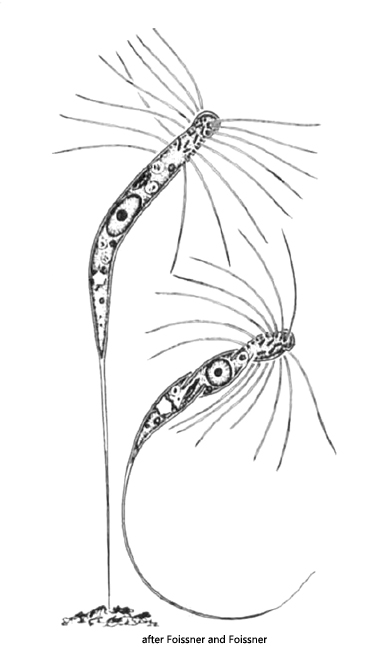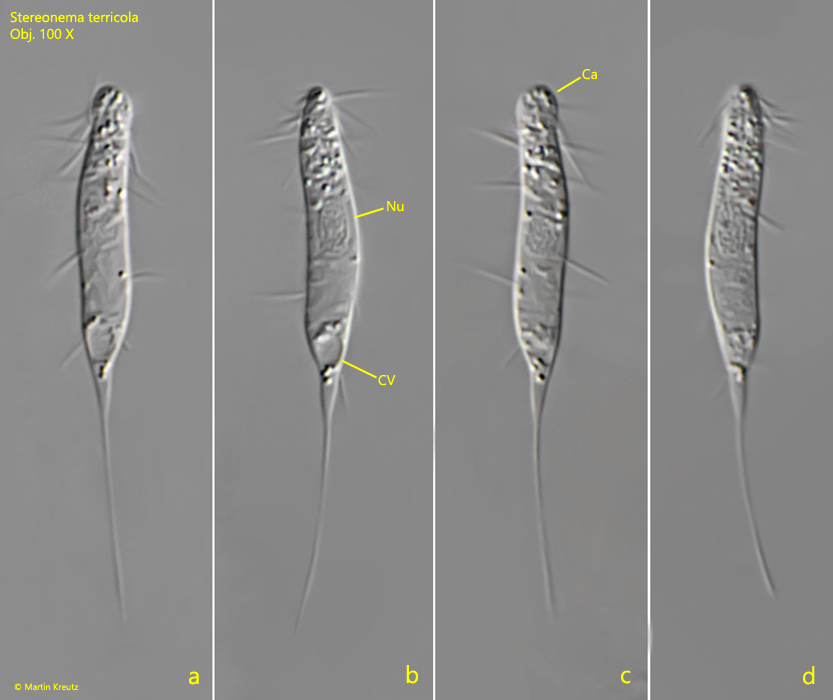Stereonema terricola
(Foissner & Foissner, 1993)
Most likely ID: n.a.
Synonym: n. a.
Sampling location: Simmelried
Phylogenetic tree: Stereonema terricola
Diagnosis:
- cell vermiform with very thin tail
- tail half as long as cell
- length 30–50 µm, width 3–4 µm
- anterior capitulum conspicuous
- 8 kineties with 8 flagella each

I have found Stereonema terricola in the Simmelried until 2007, but exclusively in pond 5 (s. Simmelried). At first sight Stereonema terricola looks like a ciliate, due to the numerous, short flagella. However, Stereonema does not have a micronucleus and has electron microscopically visible features of flagellates. Stereonema is a genus of flagellates that belong to the Hemimastigophora. They differ from the genus Spironema in that the cells cannot perform euglenoid movement, but are “stiff”. Several species of Stereonema were described by Wilhelm and Ilse Foissner in 1993, including Stereonema terricola. This species was first identified in soil samples from the Grand Canyon. The characteristics of the cells of my population agree to a large extent with the description by Foissner & Foissner. The only difference was that my specimens also had flagella below the middle of the body (s. fig. 1 a-d). In the drawings of Foissner & Foissner they are localized only in the anterior quarter. However, since this is a little studied genus, I consider this to be a common variance. The alternative would be the similar species Stereonema geiseri. However, this one grows only 15 – 20 µm long, while my specimens were on average 40 µm long. In addition, the tail of Stereonema geiseri is only a quarter of the body length and the shape is also plumper, without a conspicuous capitulum. In contrast, Stereonema terricola is very slender, with parallel sides and a bulbous capitulum, as shown by the cells of my population.

Fig. 1 a-d: Stereonema terricola. L = 41 µm. A freely swimming specimen. Ca = bulbous capitulum, CV = contractile vacuole, Nu = nucleus. Obj. 100 X.